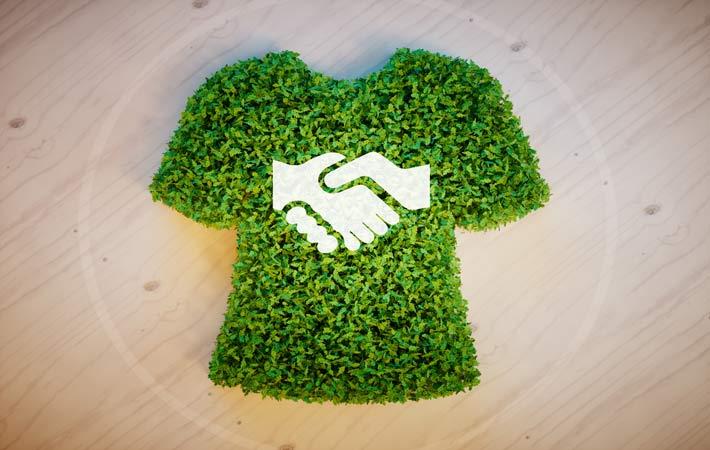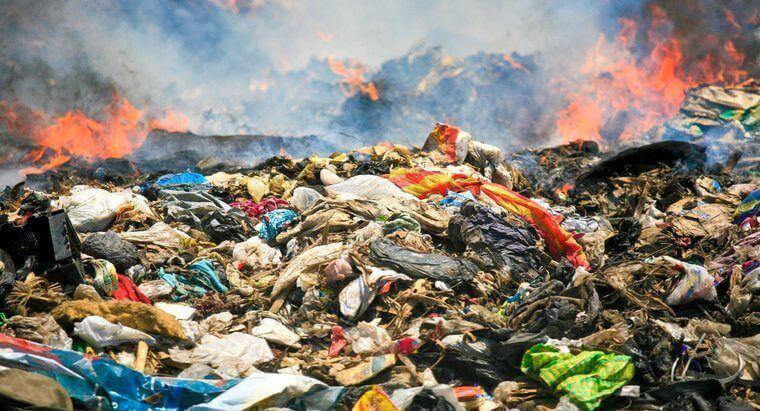
Fast Fashion Sees a Shift Toward Environmentally Friendly Consumer Demands
Clothing and apparel companies are quickly creating new items for consumers to stay in line with the latest trends. These items are sold through the fast fashion industry at an affordable price, but with the help of fossil fuel consumption.
It is a business model often described as “take, make, break, and discard.”
The European Union proposed new rules in 2022 as part of a broader push to make consumer goods in multiple industries more sustainable. That means clothing must be durable and reusable according to specific regulations, and bans on destroying unsold materials, including textiles, would be in place.
About 6.4 million tons of textiles are thrown away in the European Union each year, which equates to approximately 24 pounds per person. [[1]]
Customers Are Willing to Spend More to Have Sustainable Fashion
In a 2021 LendingTree survey, 55% of American consumers said they’d be willing to spend more on sustainable and eco-friendly products. Another 40% of those who completed the questionnaire stated that they’d be ready to boycott companies that are unwilling to support the environment or push toward making positive changes in this area. [[2]]
In that survey, clothing came in third for industries where consumers see eco-friendly options. Only food (50%) and cleaning products (39%) were more important than apparel (33%).
Production and manufacturing activities related to the fashion industry are responsible for about 10% of the total global carbon emissions each year. That figure is equal to what the entire European Union produces annually. [[3]]
Even the simple act of washing clothes releases 500,000 tons of microfiber pollution each year into the ocean, equivalent to dumping 50 billion plastic bottles into the water. [[4]]
Those pollution concerns are why the European Union proposals would require companies in the fast fashion industry to include information about sustainability and how to recycle the apparel on the label.
Since consuming textiles has one of the highest negative impacts on climate change, those issues are behind the drive for more sustainable practices in the fast fashion industry, and it is the shopping habits of Generation Z that are leading the way.
Gen Z Shoppers Influence the Purchasing Habits of Older Generations
First Insight initially published information about Generation Z’s preference for sustainability in 2020. That data showed their preference to work with companies and brands that use eco-friendly processes whenever possible, even if that costs them more financially. [[5]]
Since that time, Generation X has seen an almost 25% increase in their willingness to pay more to work with sustainable brands and an over 40% increase for eco-friendly products. Even Baby Boomers have been influenced by this push to create a more environmentally friendly process.
This issue involves more than reducing carbon emissions. Fast fashion also poses societal issues in developing economies that require attention. Approximately 80% of all the apparel in this industry is made by young women between 18 to 24 years of age. [[6]]
The U.S. Department of Labor has also found evidence of child and forced labor in numerous countries where fast fashion is present, including Argentina, Bangladesh, China, Turkey, and Vietnam. When rapid production is necessary to achieve sales and profits, money becomes more important than a worker’s welfare. [[7]]
How We Can Work Together to Solve This Problem
Instead of creating short-term trends that lead to quick profits, the fashion industry must transform into a long-term business model focusing on quality and customization to reduce production waste.
Companies need to look for ways to maximize the useful life of the textiles they produce instead of shipping them away for destruction to make more. Clothing is reusable, as evidenced by the rise of secondhand sellers, thrifting, and personal sales.
Retailers are experimenting with ways to improve gear to reduce returns, while other solutions involve renting apparel or using sustainably sourced materials in the manufacturing process. When a company aligns its vision and values with customer desires, the outcomes are better for everyone while the planet receives a helping hand.
Oversight is also necessary. In France, the government has made a pact with 150 brands to help make the fashion industry move toward more sustainability.
Even if all those elements are available, society must be willing to do its part. About 30% of consumers say they buy sustainable items because they want to improve the environment, but only 7% take these actions for social signaling. [[8]]
At the moment, fast fashion says consumers need more to have more. If this industry is going to become sustainable, it’ll need to change that dynamic so that less becomes more.
[[1]] ‘Fast fashion,’ environmentally friendly? Europe proposes new rules : NPR
[[2]] 55% Would Spend More on Eco-Friendly Products While Willing to Boycott Less-Green Companies (lendingtree.com)
[[3]] How the fashion industry can reduce its carbon footprint | McKinsey
[[4]] How Fast Fashion Hurts the Planet Through Pollution and Waste (businessinsider.com)
[[5]] The State of Consumer Spending: Gen Z Shoppers Demand Sustainable Retail (firstinsight.com)
[[6]] By the Numbers: The Economic, Social and Environmental Impacts of “Fast Fashion” | World Resources Institute (wri.org)
[[7]] List of Goods Produced by Child Labor or Forced Labor | U.S. Department of Labor (dol.gov)
[[8]] Consumers Demand Sustainable Products And Shopping Formats (forbes.com)

